
[292] Pyrrhula pyrrhula, Bullfinch
Chloris chloris, Greenfinch
Fringilla coelebs, Chaffinch
Introduction
In no particular order, Pyrrhula pyrrhula, the Bullfinch; Chloris chloris, the Greenfinch; and Fringilla coelebs, the Chaffinch, are three of the four relatively common species of finches found in the UK. We have already met [067] Carduelis carduelis, the Goldfinch.
There are many other similar species and formally we have to call our birds the Eurasian (or Common) Bullfinch, the European Greenfinch and the Common Chaffinch.
Many birds in the Finch family, Fringillidae, are called Finches, but many have other names. Conversely several birds called Finches are not in the family Fringillidae!
I will consider them separately and look briefly at our other finches.
Taxonomy
Kingdom – Animals
Phylum – Chordates
Class – Aves (Birds)
Order – Passeriformes
Family – Fringillidae (Finches)
The Finch family Fringillidae has about 150 species, almost all of which come in the subfamily Carduelinae, named from the genus Carduelis, which we have already met as the Goldfinch. Until about ten years ago the Greenfinch was Carduelis chloris but after DNA studies the Greenfinch now has its own genus as Chloris chloris.
The Bullfinch, in this subfamily, is Pyrrhula pyrrhula.
The other subfamily Fringillinae only contains the genus Fringilla consisting of just the Chaffinch, Fringilla coelebs, and three close relatives. (A third subfamily has recently been added.)
See text for more details.
Names
Finch is an Old English word coming from Germanic roots, probably originally applied to the Chaffinch.
The Bullfinch gets its name from its front-heavy bull-like appearance. It was originally Loxia pyrrhula. (See the Crossbill under Other UK Finches. The word Loxia comes from Ancient Greek meaning crosswise.) Pyrrhula comes from the Ancient Greek pyrrhus, meaning flame-coloured, cognate with pyre.
I would not normally call a Greenfinch green but in some circumstances parts of it may look a slightly greenish shade of yellow. Chloris from Latinized Greek is a pale green colour.
Chaffinch does actually come from chaff-finch. In the days when farmers threshed corn to separate the wheat from the chaff, the Chaffinch would search through the discarded chaff.
From roots meaning to chirp or make a noise (possibly cognate with to bark,) fringilla was the Classical Latin name for a small bird, possibly a Robin or Chaffinch. Coelebs is a Latin word meaning unmarried or single, cognate with celibate. (Don’t ask me why a Chaffinch is seen to be unmarried!)
Finches
The family Fringillidae consists of small passerine birds (roughly the same size as a [135] Robin or [251] Sparrow.) with stout conical bills adapted for eating seeds or nuts. It is a diverse and widespread group and includes groups of birds called Redpolls, Crossbills, Canaries and several others not normally called finches.
Several species, especially canaries, have been traditionally kept as caged birds for their singing. They also used to be used in coal mines to detect carbon monoxide.
Since about 1990 there have been many taxonomic changes with species being moved into or out of this family.
[A] Bullfinch
Male and female birds are identical in shape but there is a marked sexual dimorphism in their coloration. They are relatively large finches with a rounded shape that gives them their name.
Both sexes have dark wings with a black top to their head. They have white wing bars and rump. The male has a blue-grey back and the rest of hist body is bright pink.


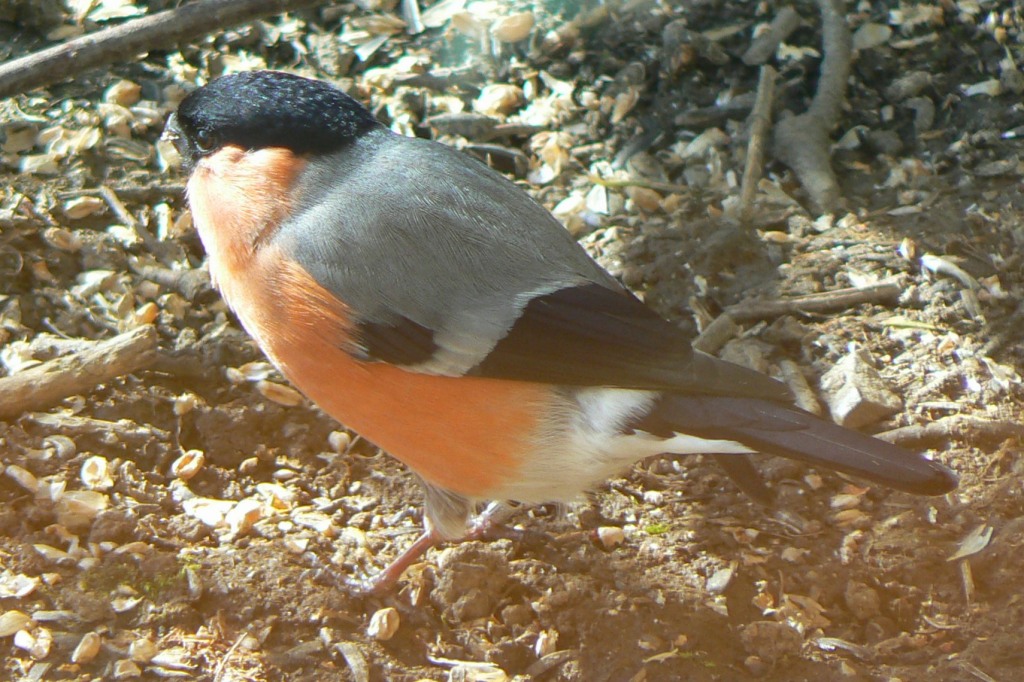
The female is a much lighter slightly pinkish grey all over.
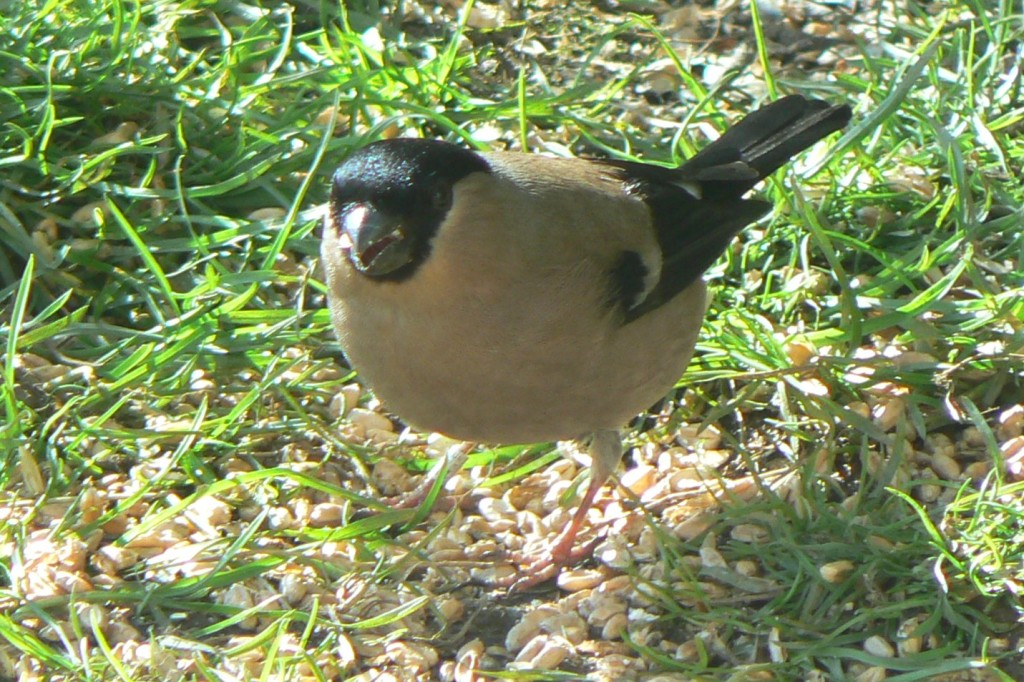

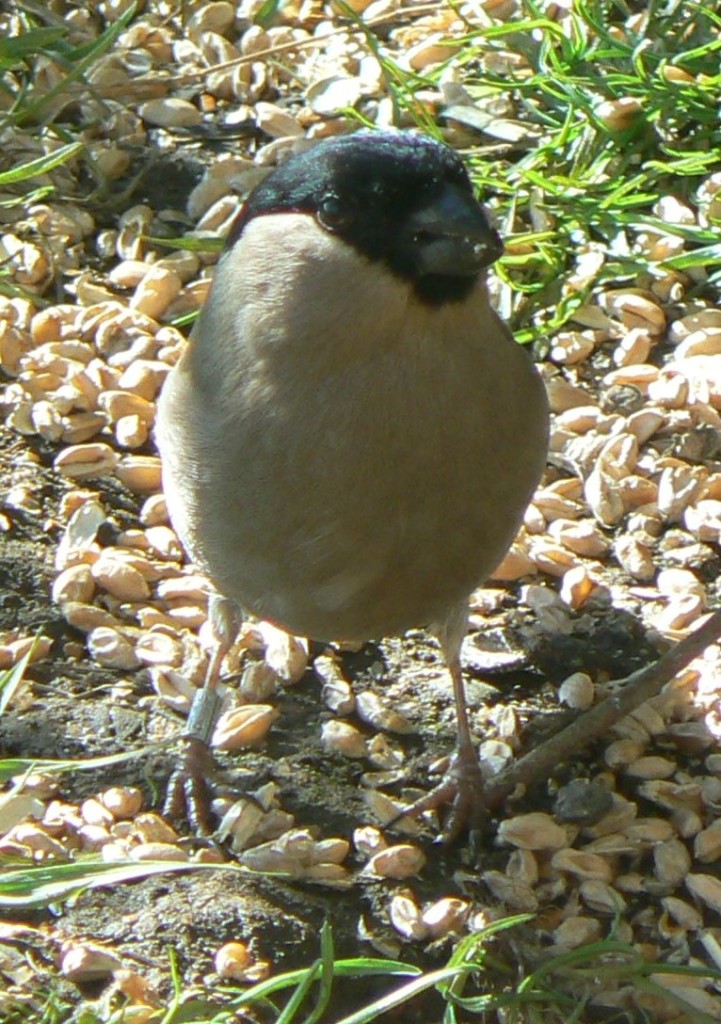
This bird is found over most of temperate Eurasia and is resident for most of its range. Its range includes all of the UK and it likes woodland environments. It mainly eats seeds and buds of trees and has been considered as an unwanted pest in orchards.
They are generally seen as a pair and will sometimes come to bird feeders, even in gardens, but they remain a relatively rare species.

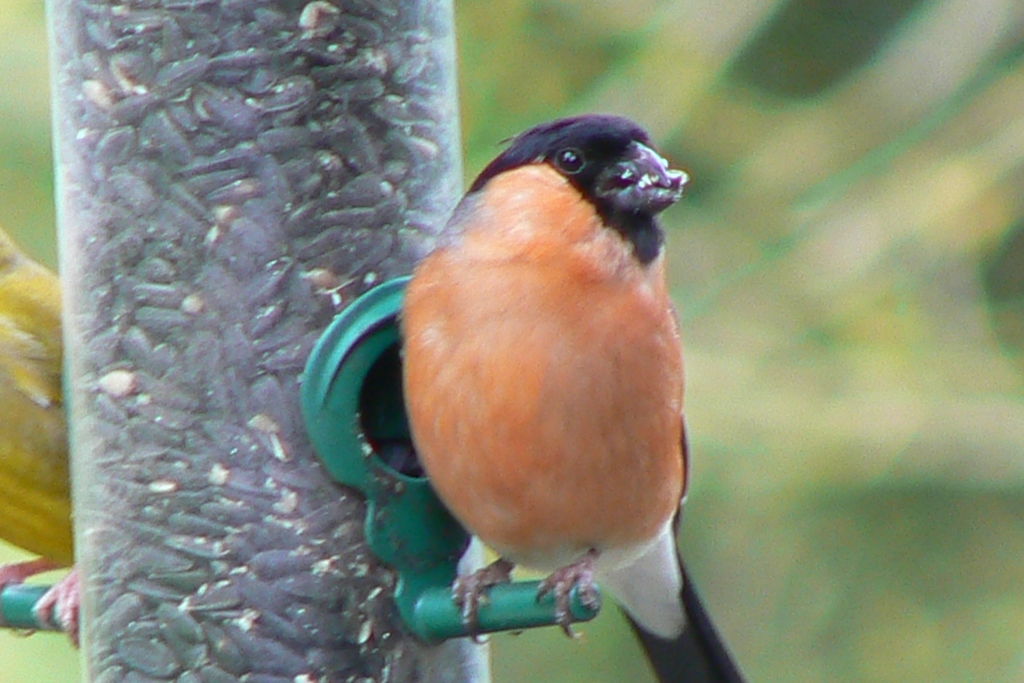


The last picture above shows a male Bullfinch and male Greenfinch.
[B] Greenfinch
Wikipedia describes the male Greenfinch as mainly green. I would say it has various shades of yellow and brown with a hint of green. There is a bright yellow edge to the wings and tail.


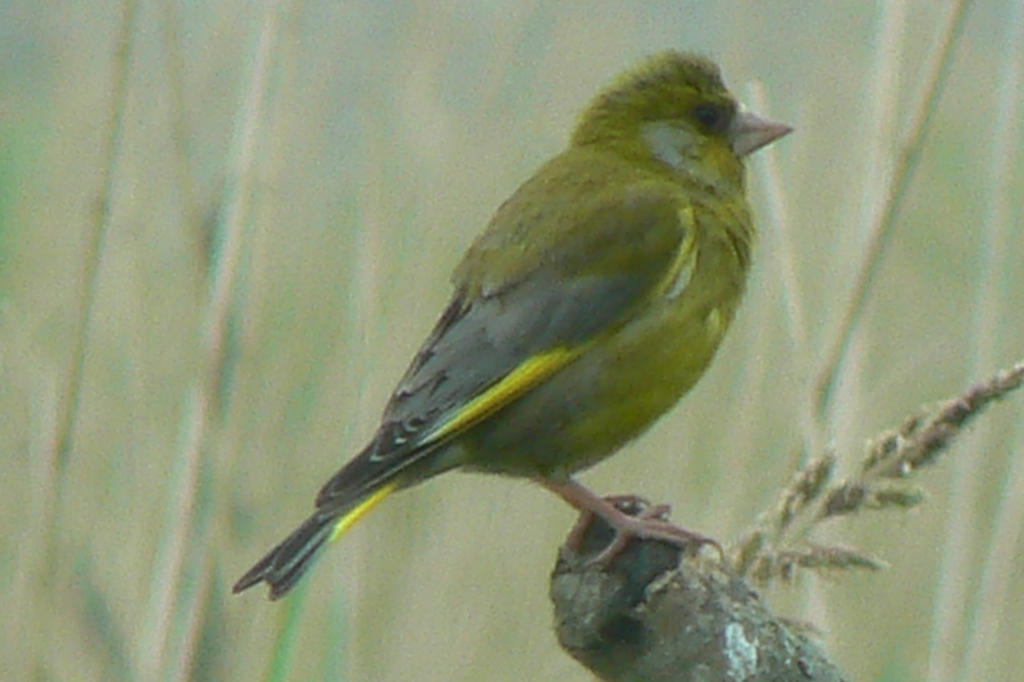

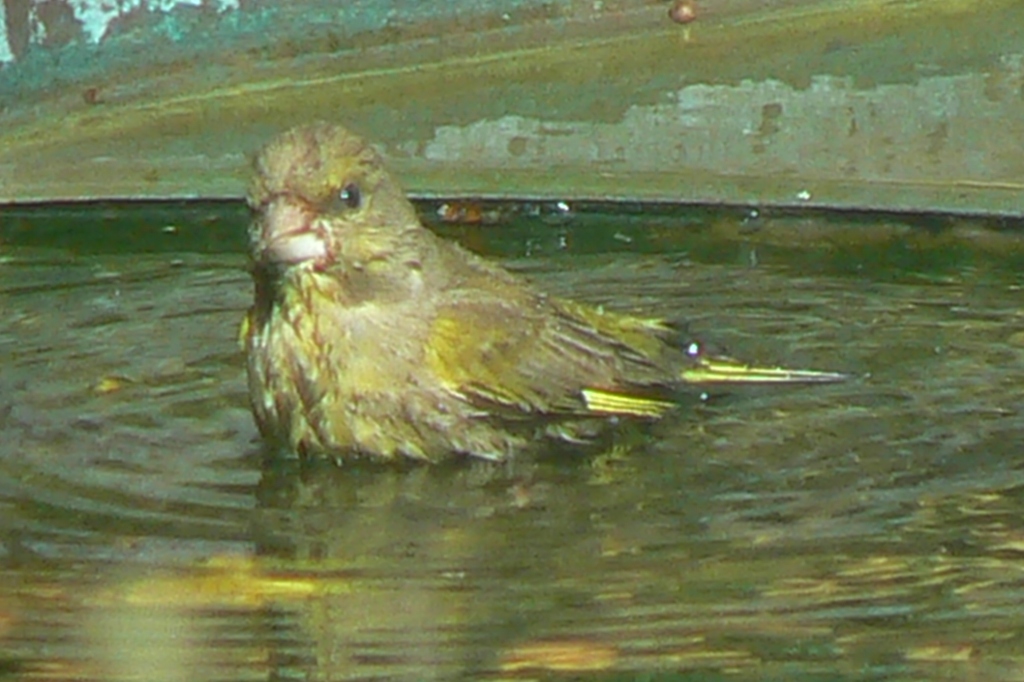
The female is duller and could best be described as mostly brown. She has a less prominent yellow edge to her wings and tail.
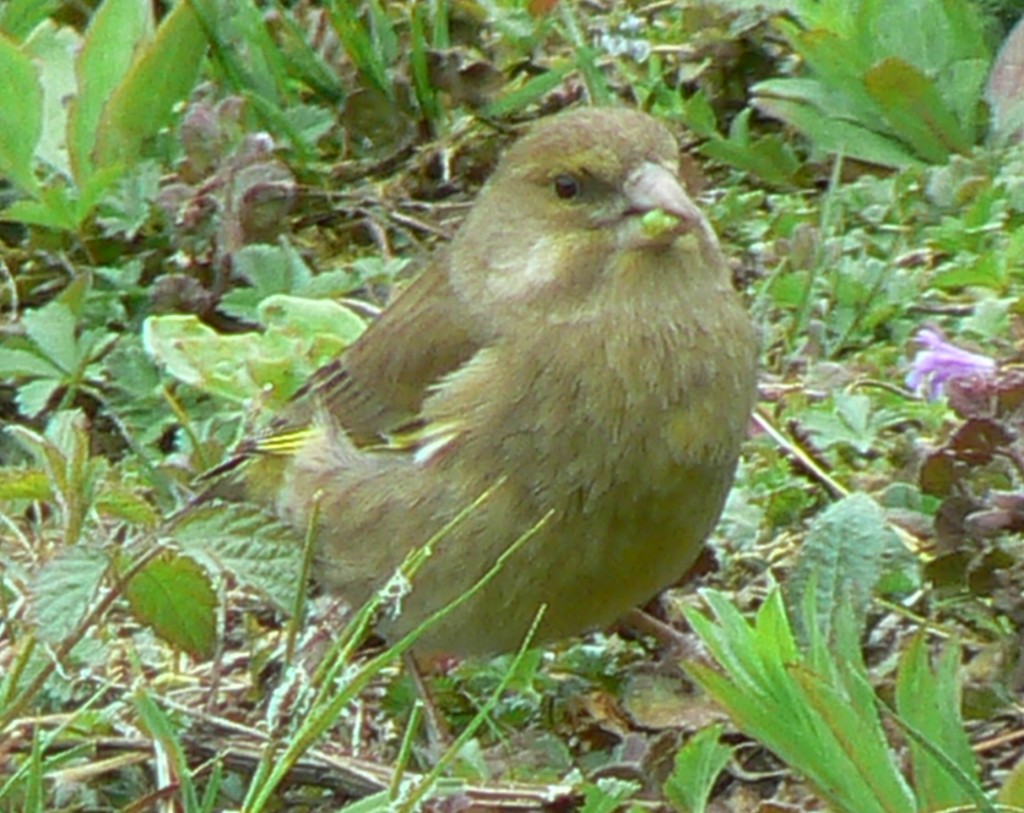
Juvenile birds look more like the female birds. Their backs are mottled and the breast has stripes of brown and buff.

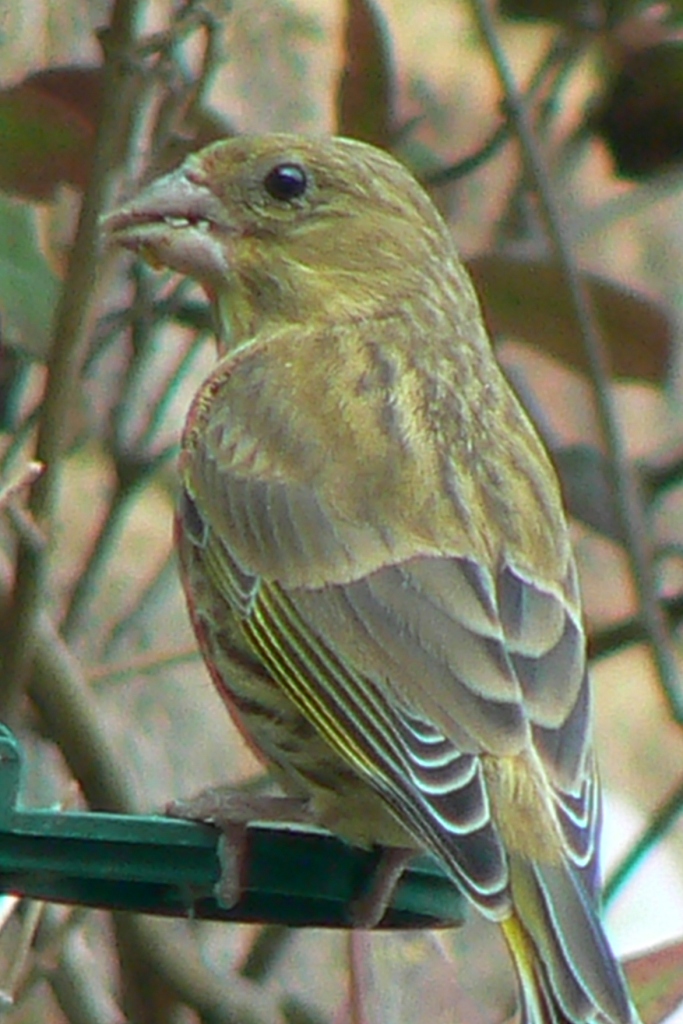

The range of the European Greenfinch is more or less Europe and it is only migratory at the edges of its range. Like the Chaffinch and the Bullfinch, it is a woodland bird.
When I started birdwatching fifteen years ago the Greenfinch was a relatively common garden bird. We saw it in our garden and often at other locations with birdfeeders.

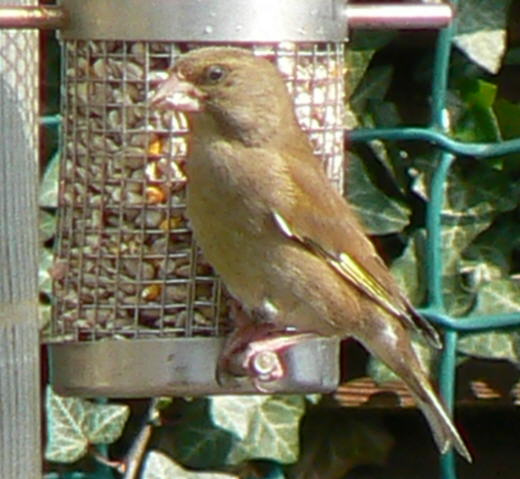
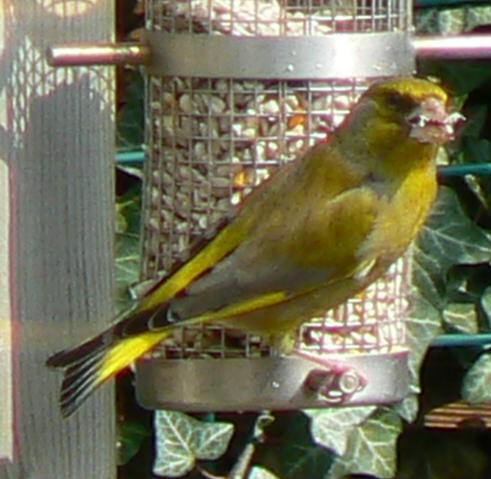
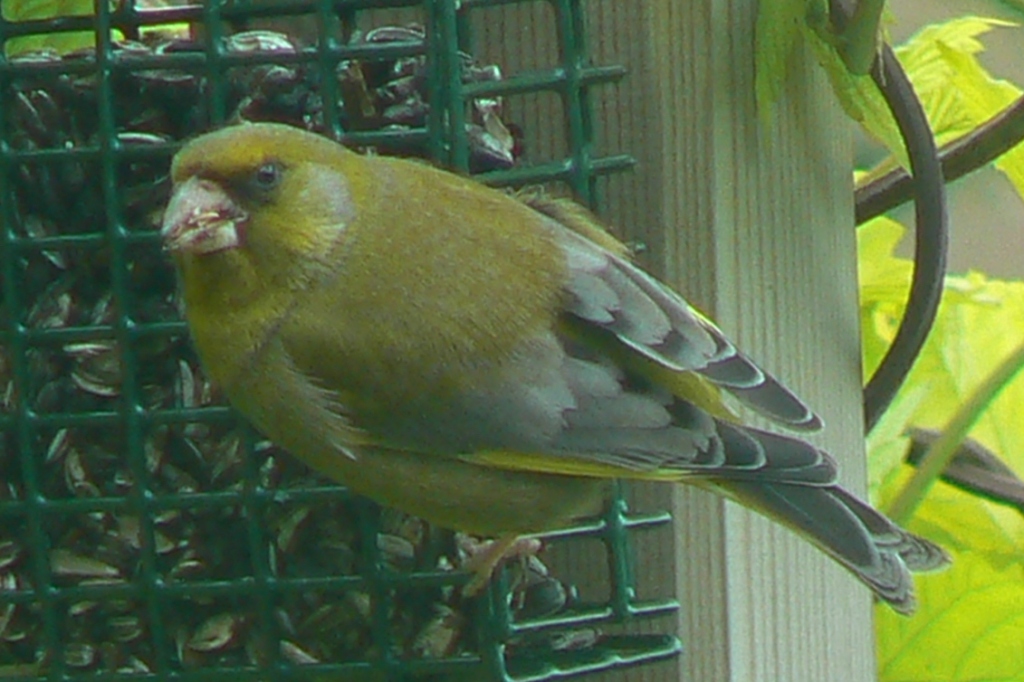

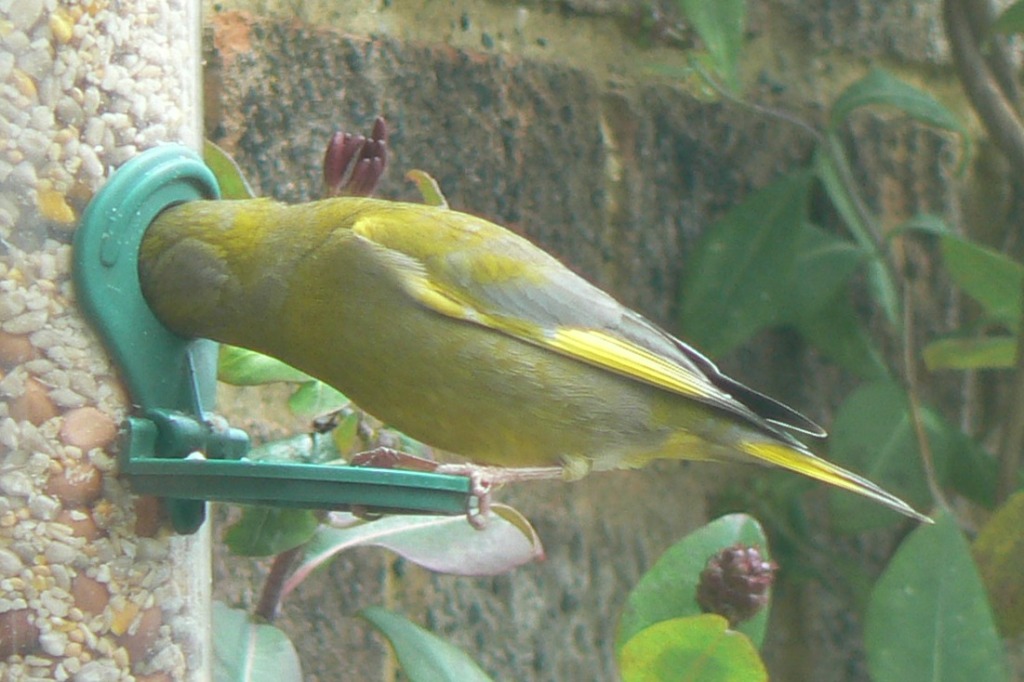
Since about 2008 numbers have decreased in the UK considerably because of a microscopic parasite Trichomonas gallinae, that also affects Chaffinches (but has not affect their numbers significantly.) I rarely see them now but occasionally I hear one in the countryside. All of my pictures are over ten years old. Their call is a single drawn-out note ‘dzeeee.’

[C] Chaffinch
The Chaffinch is one of the two most common birds in Britain but it may not be noticed because of its relatively camouflaged appearance and its ground-dwelling nature. You may see them in the countryside, especially in woods – perhaps on paths ahead. it is not associated with urban gardens. They are sometimes called pinks or spinks from their sharp single-note call.
They are also sexually dimorphic. The male has a blue-grey neck and top to its head; a pinkish brown back; dark pink face and breast and lighter underparts. The wings are black with white bars.

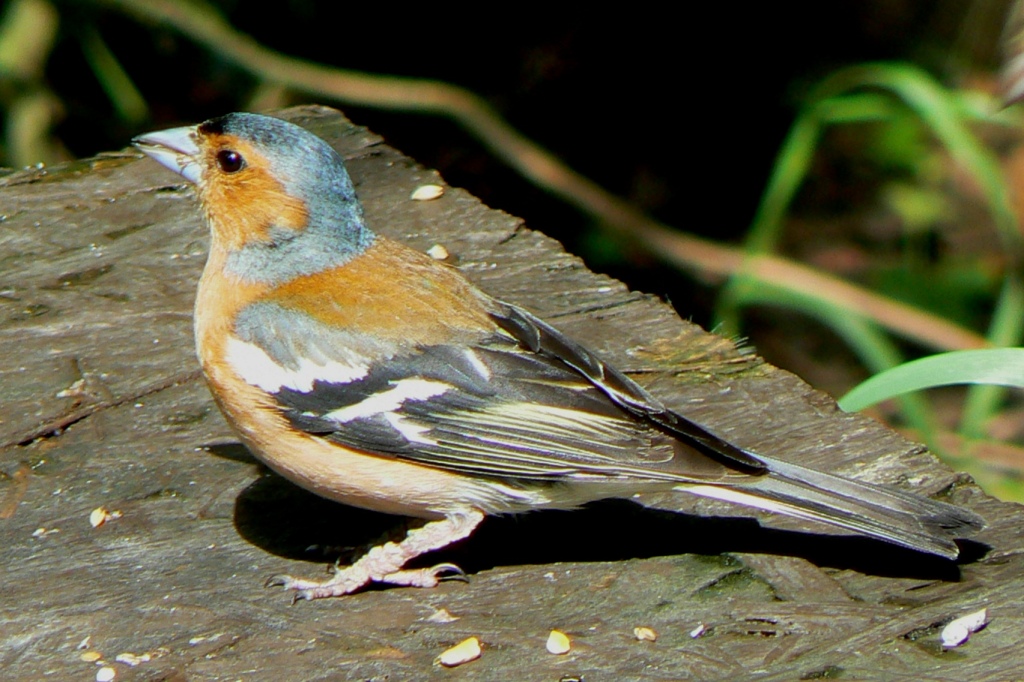

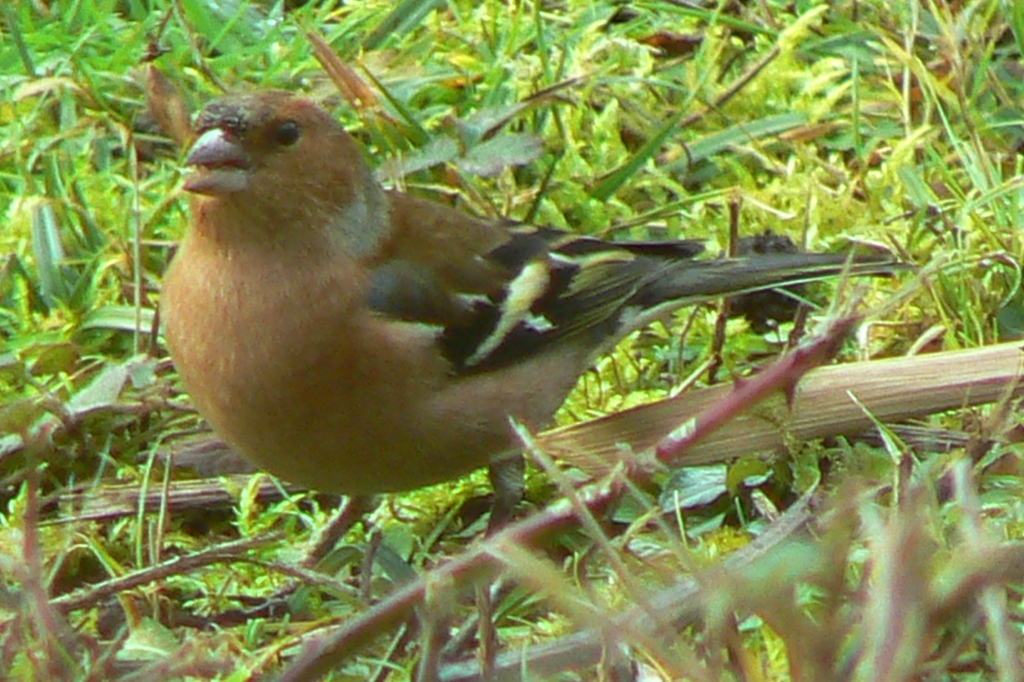

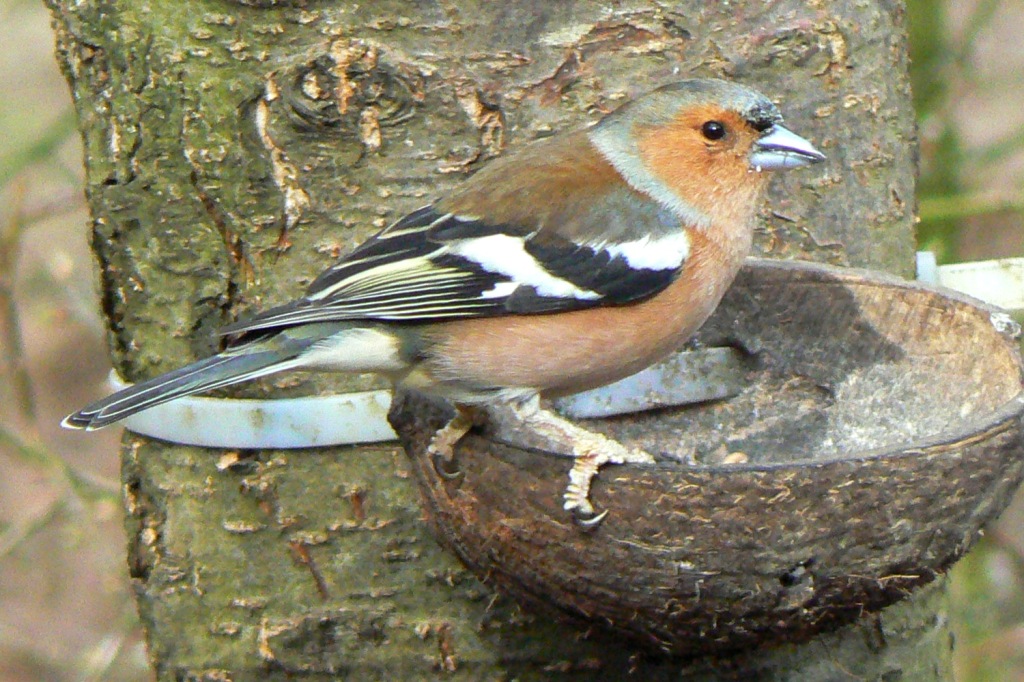
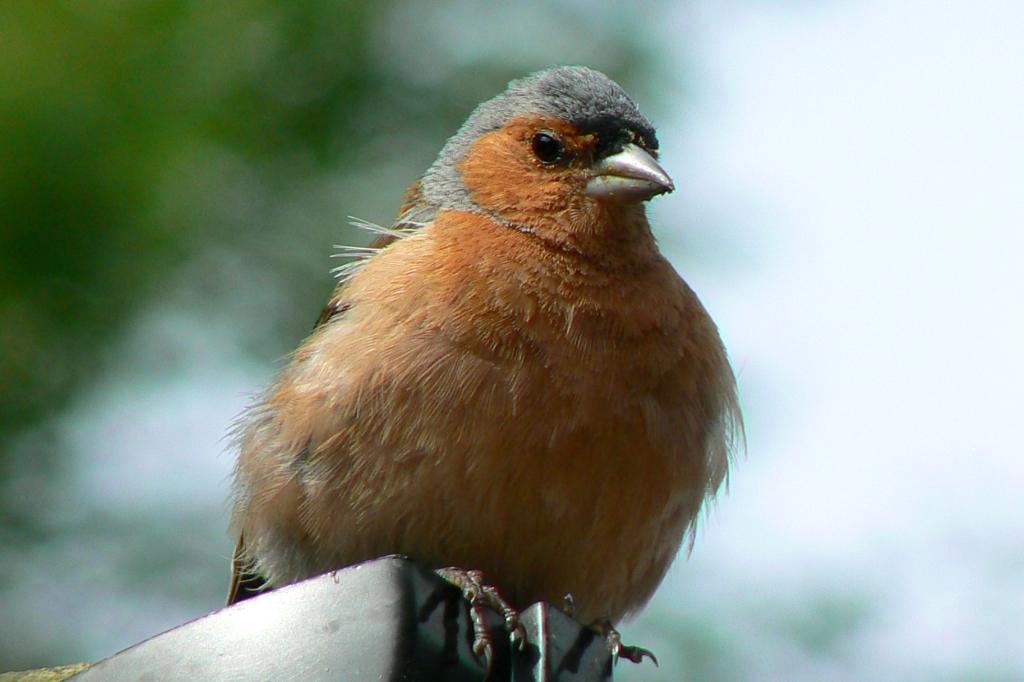
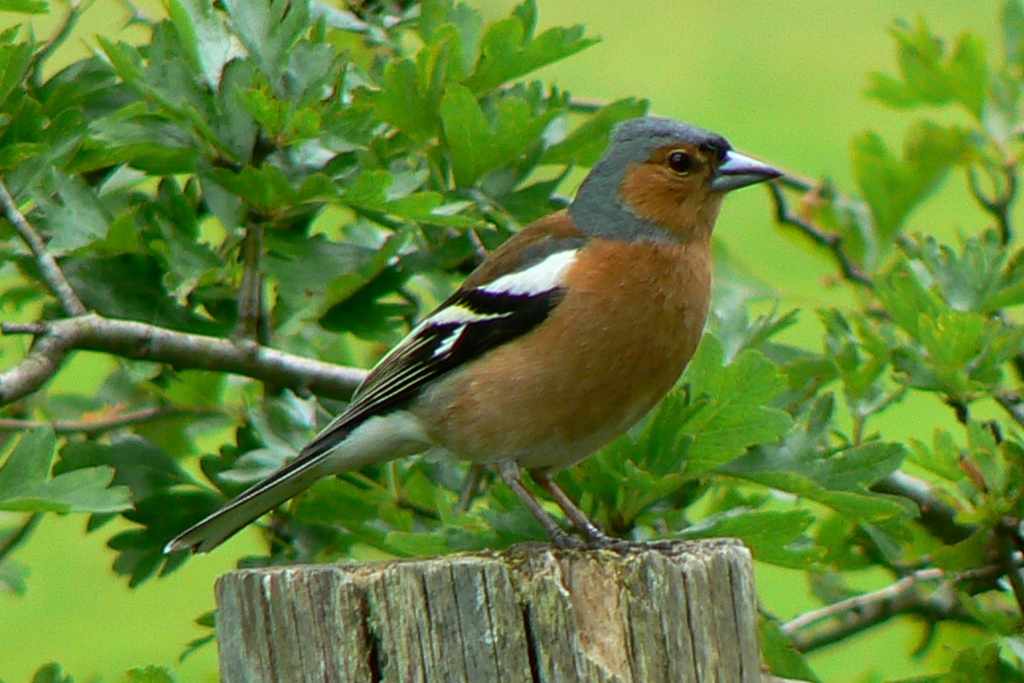
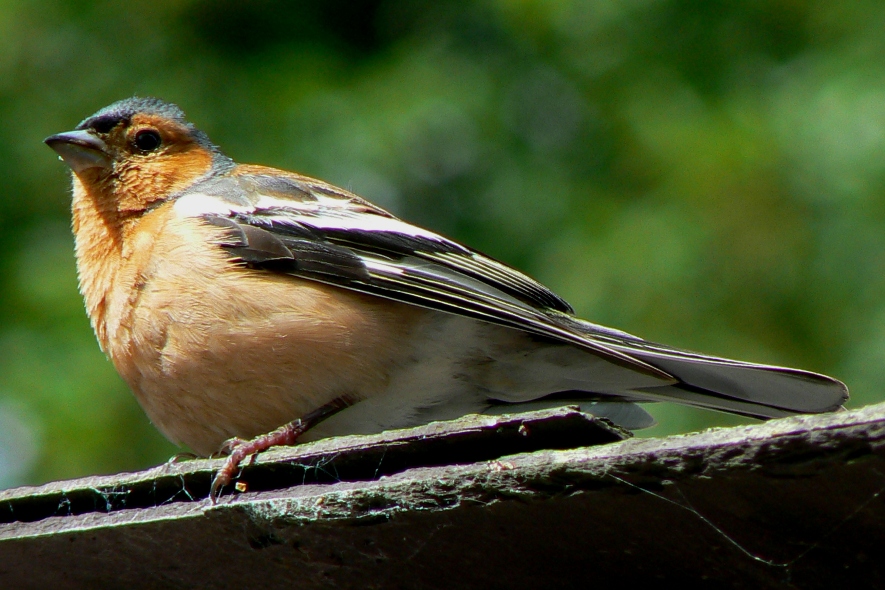

The female is generally duller, mostly brown with lighter underparts.
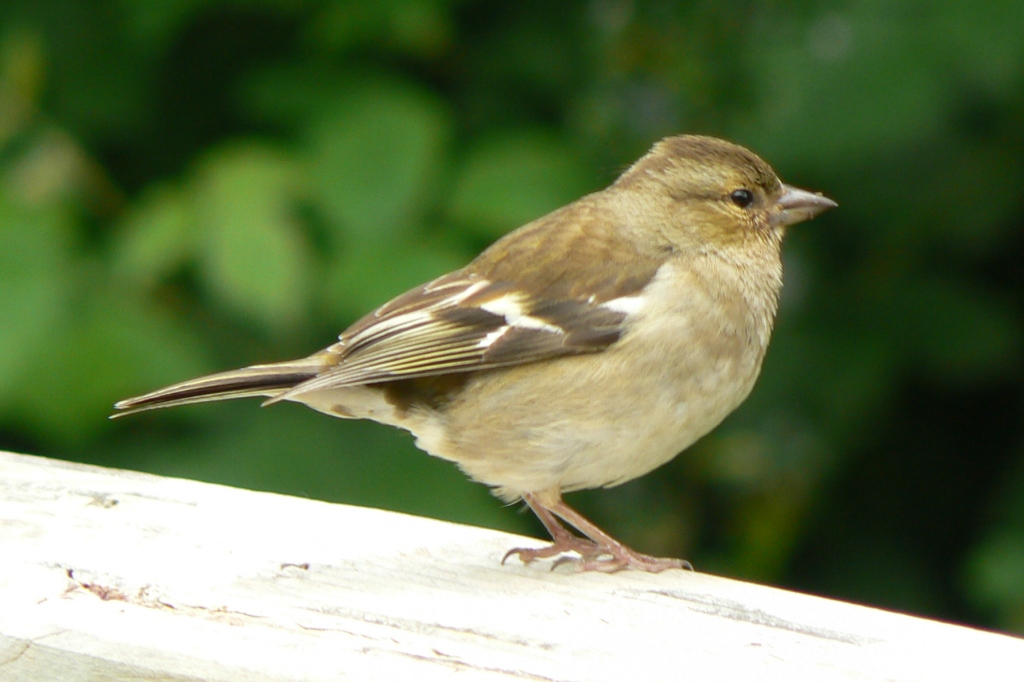
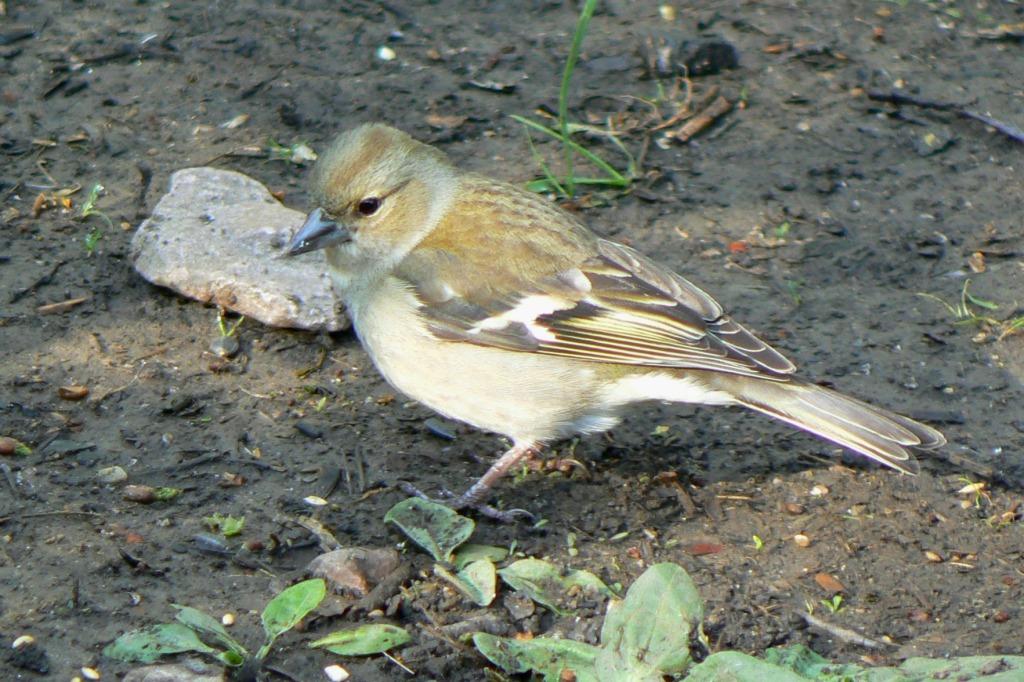


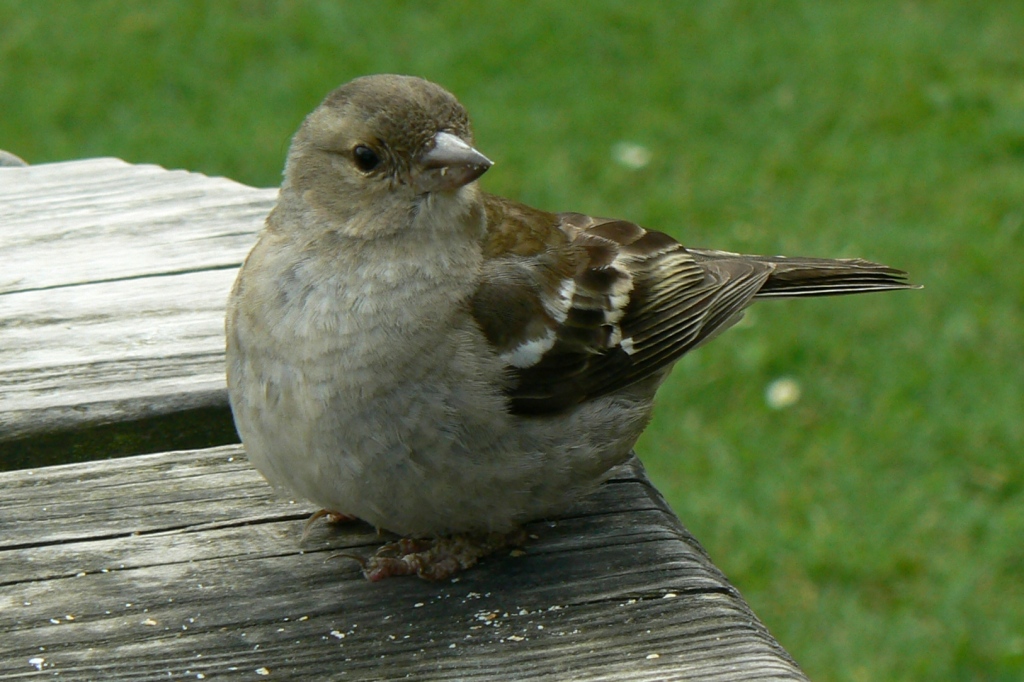
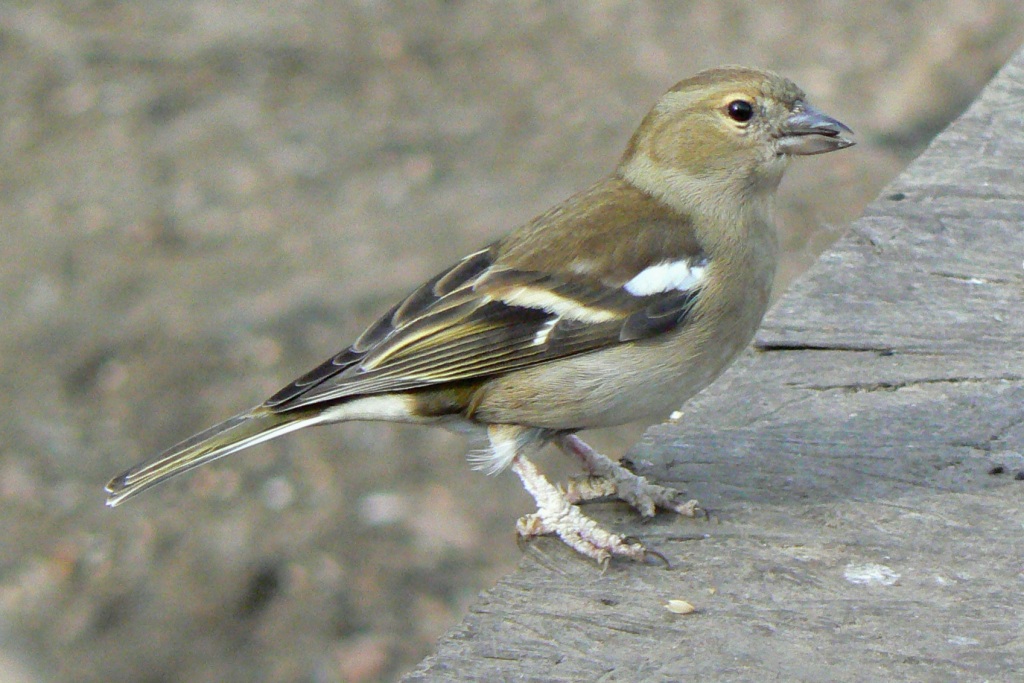


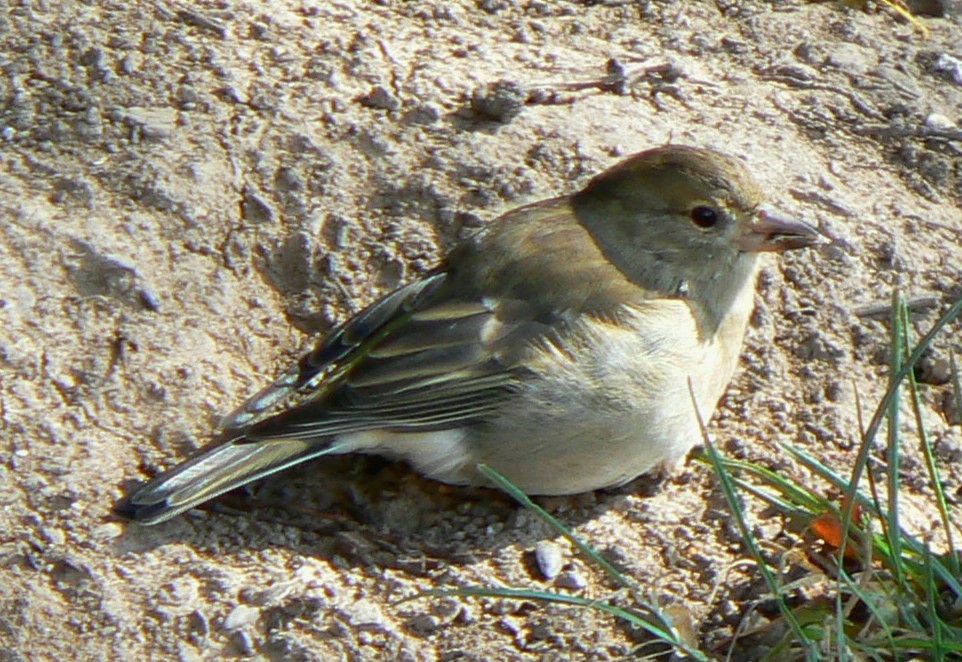

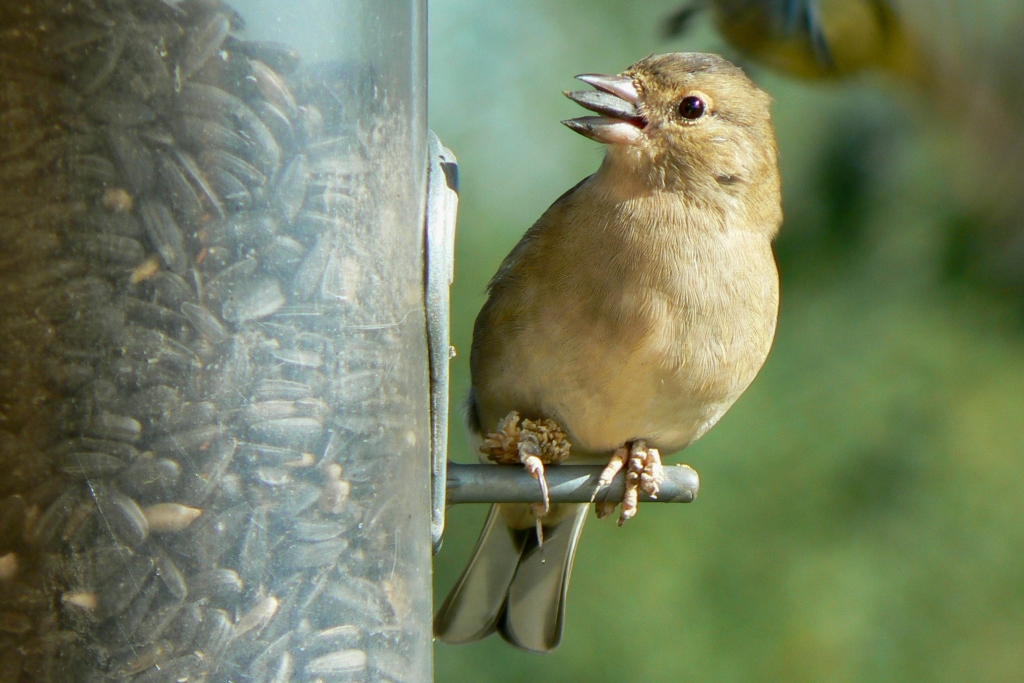
Its range includes most of Europe, Northern Africa and parts of Asia and for most of its range it is resident.
They do not normally feed on birdfeeders but, like [279] the Dunnock, will scavenge on the ground underneath rural feeders. In external café areas such as Country Houses of Motorway Services, they will scavenge around people under the tables.



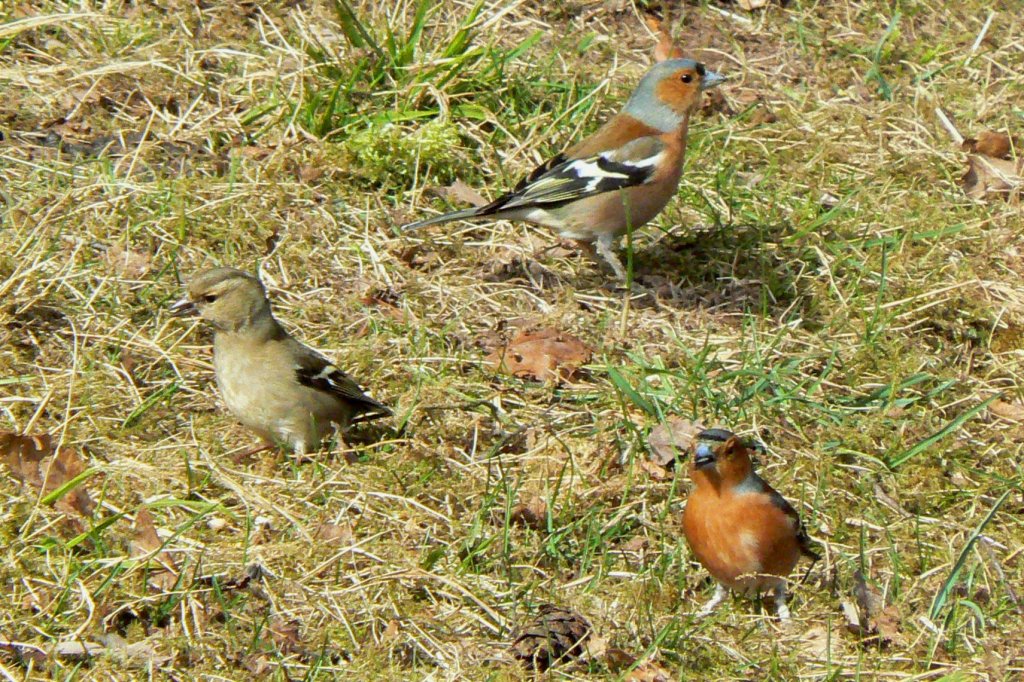
Apart from two very localised Canary Island species, the only other extant Fringilla species is the Brambling, Fringilla montifringilla. The male in summer plumage has distinctive dark head and upperparts but otherwise both male and female are superficially similar to the Chaffinch.
Its summer distribution covers the more northern areas of Eurasia and it is seen in Britain as a relatively rare winter visitor. I have seen a few Bramblings, but never close enough for good pictures.
Other UK Finches
Apart from the Goldfinch that we have already seen, the other species of finch seen in the UK are relatively rare or localized. Here they are.
- Siskin, Spinus spinus. (Strictly speaking it’s the European Siskin as about twenty other species are called Siskins, mostly also from the genus Spinus.) Widespread in Europe but generally found only in forests, particularly coniferous forest. I have only seen them in and near the Forest of Dean and in Scotland. Numbers are much higher in winter when they migrate from more northerly locations and they may come to isolated forest birdfeeders. They are somewhat similar in appearance to Greenfinch but smaller.
- Linnet, Linaria cannabina nothing to do with the plant [210] Toadflax, also Linaria. Found over all of Europe by increasingly scarce in the UK. Likes open heathland and keeps well away from people. Quite gregarious. The female is an unassuming brown. In summer the male has a bright red breast and head patch.
- Hawfinch, Coccothraustes coccothraustes. A relative newcomer to the UK, still only seen in small numbers at a few isolated sites. Its shape is a bit like a Bullfinch. It is our largest finch and its bill is certainly larger than other finches.
- Mealy Redpoll or Common Redpoll (locally often just called a Redpoll), Acanthis flammea. A relatively rare winter visitor, this bird has a red head that gives it its name. Usually seen in flocks and sometimes visiting rural birdfeeders.
- Lesser Redpoll, Acanthis cabaret, and Arctic (or Hoary) Redpoll, Acanthis homemanni. Two very similar but much rarer species. Sometimes one or two may be found amongst Common Redpolls. (The division of the genus into species and subspecies is subject to discussion and change.)
- Crossbills – Loxia curvirostra, The (Common) Crossbilll. Occasionally seen locally with seasonal variation. Its large bill has tips that cross over. Males may be red or orange and females green or yellow.
- Loxia pytyopssittacus, the Parrot Crossbill, almost indistinguishable from the Common and Scottish Crossbills.
- Loxia scotica, the Scottish Crossbill. A small population found only in Scottish Pine forests.
- Loxia leucoptera, Two-barred Crossbill. A rare vagrant visitor.
- Twite, Linaria flavirostra. A small relative of the Linnet, seen sometimes in large flocks, especially to the north of the UK.
- (European) Serin, Serinus serinus and others are occasionally seen as vagrant visitors.
Other Notes
The Greenfinch, Chloris chloris, is another example of dual naming like the Linnet. Chloris gayana is a type of grass found in Africa. There is nothing to stop a plant and an animal from using the same genus name.
Chaffinches may be seen with extensive tumours on their legs and feet caused by a viral infection. This is not the same as the affliction that has affected Greenfinch and it doesn’t seem to cause them problems.
See also
You can look out for a few more posts about birds of various types, including some very common ones. See if you can think of some that haven’t come up yet.
